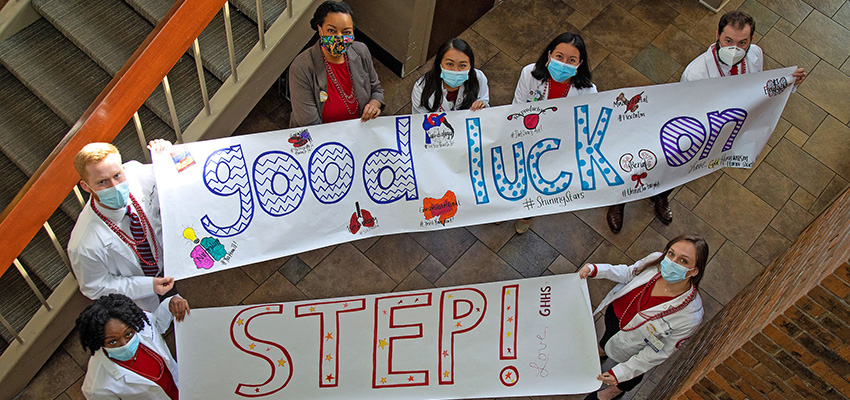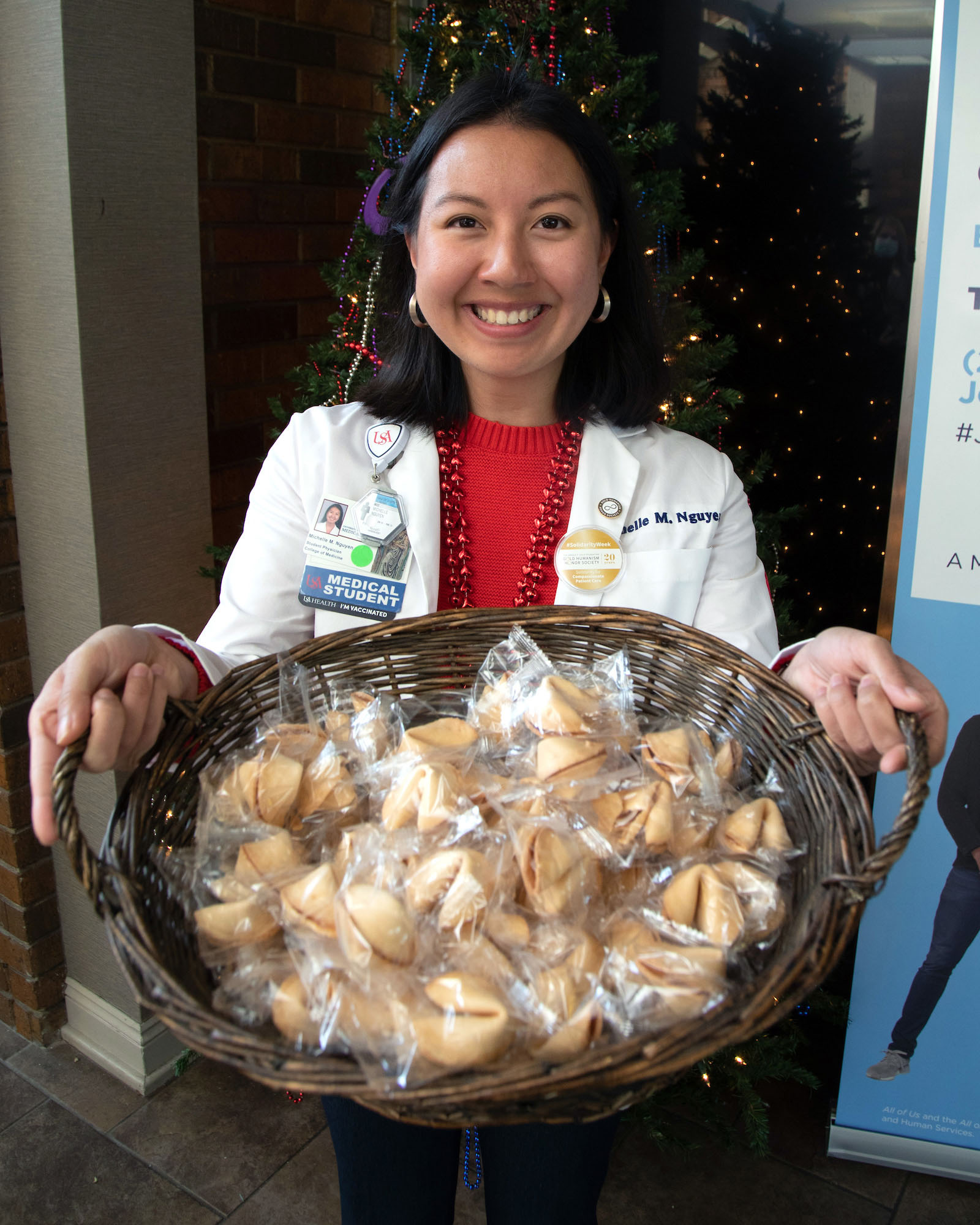Second-year students plan for pass-fail Step 1
Posted on February 18, 2022 by Carol McPhail

During Solidarity Week, GHHS members had an encouraging word for the next group of students taking the United States Medical Licensing Examination Step 1: “PASS.”
Enclosed in fortune cookies and handed out to M2s, the message cited a recent change in the way the USMLE Step 1 will be scored, from a numeric score to pass-fail.
Second-year medical student Carey Johnson said the news came as “both a surprise and a relief.”
“For every class before ours, the marathon-like preparation and daily pep talks from family and friends all resolved into one single thing, the numerical three-digit score,” said Johnson, president of the Class of 2024. “This was a score that, for some highly competitive specialties, helped to bolster your application and solidify an interview spot for the fourth year. It was also a score that increased the stress and anxiety to perform better on the next board exam, Step 2.”
The United States Medical Licensing Examination announced the change in February 2020 – prior to COVID disruptions – after years of conversations about the need for positive, systemic changes in medical education. Among the criticisms of a three-digit score were that it affected student well-being and distracted students from developing other skills related to communication and teamwork.
 Johnson witnessed the stress and day-to-day grind of studying for Step 1 when his
wife, Angela Mosley-Johnson, M.D., prepared for the exam in 2019. He said the new
pass-fail score removes some of the pressure for his class. “Going pass-fail takes
away the immense stress of passing Step 1 with a certain score for a particular specialty,
especially when we have not even begun our clinical rotations yet,” Johnson said.
“And, for those students who have not yet decided on their future specialty, this
change allows them the room to discover themselves during the clinical years.”
Johnson witnessed the stress and day-to-day grind of studying for Step 1 when his
wife, Angela Mosley-Johnson, M.D., prepared for the exam in 2019. He said the new
pass-fail score removes some of the pressure for his class. “Going pass-fail takes
away the immense stress of passing Step 1 with a certain score for a particular specialty,
especially when we have not even begun our clinical rotations yet,” Johnson said.
“And, for those students who have not yet decided on their future specialty, this
change allows them the room to discover themselves during the clinical years.”
Johnson said, however, that the change could place more emphasis on the score of a single exam, Step 2 Clinical Knowledge, taken during the third year of medical school. “It ultimately removes an aspect from your application that may have set you apart from other applicants during the interview season,” he said. “Whether this change will have a positive or negative effect, waits to be seen until the Class of 2024 hits the interview trail as the first class to take the exam under these conditions.”
T.J. Hundley, M.D., associate dean of medical education at the USA College of Medicine, and other faculty continue to encourage second-year students to develop their study plans for Step 1 as others have done in the past. “Excellent preparation for this exam will ensure that students continue to have a strong foundation of medical knowledge as they begin their clinical clerkships,” Hundley said. “This will lead to clinical success as they become active members of the healthcare team as M3 students.”
Once Step 1 is behind them, students may find that residency programs will take a more holistic approach to selecting applicants, Hundley said. “While academic performance will remain an important part of the selection process, many programs may increase emphasis on community service, leadership opportunities and involvement in research and interest groups.”
In the long run, moving the focus away from a specific score on Step 1 will encourage future physicians to focus on important domains such as physical exam techniques, communication skills, interprofessional collaboration and reflective practice, Hundley said. “Overall, this would allow students to develop into physicians ready to provide patient-centered culturally responsive care.”


